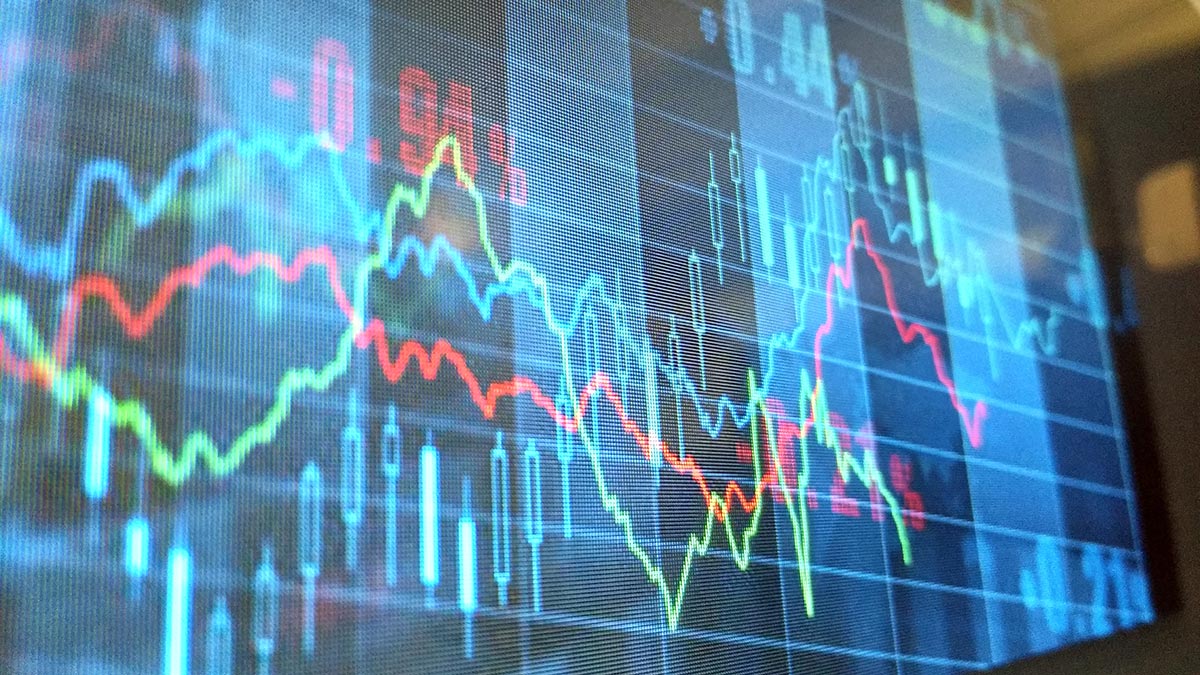The Market Abuse Regulation (MAR) is a key piece of legislation for the financial sector in the European Union. It came into force in July 2016 in order to instil confidence in the markets, protect investors and maintain the integrity of the European financial system through market abuse monitoring and other measures.
In creating the regulation, the EU stated that “a genuine internal market for financial services is crucial for economic growth and job creation in the Union” and that the legislation within it would facilitate the smooth operation of the markets while battling market abuse.
The national competent authorities (NCAs) across the EU take contraventions of MAR very seriously, having imposed 541 administrative sanctions and measures with an aggregated value amounting to €17,840,686 in 2020, the latest year for which there are published figures.
The above illustrates why it is important to reduce your organisation’s exposure to market abuse risk.
1. What is market abuse monitoring?
The term ‘market abuse’ relates to activities that can distort market performance to benefit an individual, group or organisation. Market abuse creates false prices for financial products and disadvantages financial market participants, such as other businesses or investors, as a result of the actions taken.
Market abuse monitoring, also called market abuse surveillance, involves organisations putting in place systems to spot market abuse activities occurring within the workplace. Companies must detect unethical behaviour and move to stop it. This can be challenging, costly and time-consuming. For these reasons, many organisations opt to use automated compliance tools that monitor employee activities and alert relevant teams to potential violations.
2. Market abuse behaviours
Here are some of the behaviours that could constitute market abuse:
| Behaviour | Explanation |
| Spoofing/Layering | Spoofing is when someone places a large order on a financial instrument to give the impression of great interest in that product. Once the price moves in reaction to the order, they cancel it and take the opposite position in order to benefit from the movement in the market. Layering is a type of spoofing that involves making multiple fake orders at different levels, giving the perception of market liquidity before cancelling them and taking the opposite position. |
| Front-running | Sometimes referred to as tailgating, front- running involves an employee delaying a big trade for a client until they have made a personal transaction in the same product. The idea is that they can buy the stock at a low price, and then the client’s significant trade will boost the price of the financial product in which they have invested. |
| Insider dealing | Also known as insider trading, this behaviour involves people using non-public information to gain an advantage over other market participants and either benefit financially or avoid making large losses from trading. |
| Unlawful disclosure of inside information |
Insiders share non-public information that could give others advantage and be used to either benefit financially or avoid making large losses from trading. |
| Wash trading | Wash trading involves a trader buying and selling the same financial instrument simultaneously in order to create a false impression of the demand for the product. Sometimes two or more traders collude to buy and sell from each other for the same purpose or to increase commission payments. |
| Marking the open Marking the close Marking the fix |
This set of market abuse behaviours involves purposefully buying or selling a financial instrument at specific points of the day, such as the opening or closing seconds of trading. By marking the open or close, the trader artificially inflates or deflates the price at specific points, allowing them to make gains. |
3. How to enable market abuse monitoring
3.1 Identify existing and emerging market abuse risks
Given the types of market abuse behaviours above, you should identify all of the areas of your business in which these could become a compliance issue. Think about how you currently mitigate market abuse risks and what monitoring capabilities you have in place already.
All legislation is subject to change and improvement over time. But with that come new risks which you need to manage. For example, earlier in 2022, the European Securities and Markets Authority (ESMA) advised that it would provide further guidance on identifying inside information. This could change the way in which you perform market abuse monitoring, and you should be aware of potential forthcoming adjustments like this one.
ESMA has also discussed the use of social media for disseminating investment information, showing that our digital spaces are also subject to market abuse. This is why you must be alert to emerging risks in this and other similar areas.
3.2 Understand regulatory requirements
For an organisation, MAR brings a host of regulatory requirements that compliance functions must understand and adhere to. These include the obligations to:
- Disclose inside information to the public as soon as possible
- Create and maintain an insider list to document who has access to a piece of inside information in the event that you meet the requirements to delay disclosure of inside information to the public
- Keep records of insider lists and any changes made to them
- Publish market soundings in the prescribed manner
- Remind insiders of their duty not to commit insider dealing or to unlawfully disclose inside information
- Report suspicious orders or transactions
- Accompany investment recommendations with a disclosure of particular interests or indications of conflicts of interest
- Notify relevant authorities about any order or transaction undertaken on personal accounts by a Person Discharging Managerial Responsibilities (PDMR) that relate to the issuer or EAMP
3.3 Implement a market abuse policy
To communicate these regulatory requirements to employees and help them understand their roles and responsibilities in preventing market abuse, you should create a market abuse policy.
This policy shows your commitment to MAR and preventing market manipulation. It also establishes a common set of standards for the business and integrates market abuse best practices into how you operate and into your organisational culture. In a business where there is proactive action on market abuse, employees are less likely to attempt to carry out unethical behaviour.
Not only does a market abuse policy dissuade market manipulation, but it can also help reduce sanctions in the event an employee does act inappropriately. The NCA might look more favourably on an organisation that attempted to dissuade market abuse as part of its culture than a business where there has been no attempt to inform and educate employees.
3.4 Track employee personal trading
The trades that investment firm employees make in a personal capacity can lead to compliance risks relating to market abuse. There are three main risk areas in relation to this:
- Conflict of interest with a client. For example, the employee may hold stock in a rival company and so would be less inclined to help the client to succeed.
- Committing market manipulation. Examples include acting on inside information from a client or front-running a client they know is going to make a significant trade.
- Failing to disclose a suspicious transaction or order. This might happen if reporting this information would have a negative effect on their trading.
Using TradeLog, you can put in place a pre-clearance process that automatically allows or refuses permission for personal trades based on parameters you input. TradeLog also monitors employee personal trades on an ongoing basis to ensure they remain compliant, alerting you to any infractions.
3.5 Improve record-keeping and workflow
The record-keeping requirements of MAR are stringent and can increase the workload for a compliance department working manually.
For example, each piece of inside information requires its own event-based insider list. This should detail the exact time at which each insider gained access to the information and when they ceased to have access to it. You must keep records of when you updated the list and store copies of previous versions in the exact format detailed in the MAR RTS.
In addition, you should be able to prove that you made every reasonable effort to have each insider acknowledge their inclusion on the list and the responsibilities this brings with it.
InsiderList automates this process and ensures you remain compliant. It provides a digital audit trail of changes to the insider list and holds the information in the required format. It even sends automated reminders to insiders periodically to confirm they understand their obligations. This saves time and money for the compliance team whilst ensuring compliance with MAR.
4. FAQs
4.1 Which regulations require personal trade monitoring?
MAR requires companies to monitor trades to spot signs of market abuse. They must also log trade data and store it in case it is needed during a future investigation. The Markets in Financial Instruments Directive (MiFID II) also demands this, obliging organisations to record all conversations relating to trades, even if they do not happen, and to be able to recreate the exact process of each trade should there be a reason to suspect market abuse.
4.2 What are the regulators’ expectations around personal trade surveillance?
Regulators expect meticulous record keeping and effective monitoring of trades. Firms should be able to keep up with emerging risks and have the necessary technology in place to adapt to the shifting landscape.
4.3 What are dark pools?
Dark pools are private trading venues where investors and companies can perform trades away from the public. This can help avoid market volatility in the event of a large purchase of stock in one company by another, for example, but it also allows for potential market abuse behaviours to take place.
4.4 How to detect insider trading?
By investigating trades that lie outside of the typical pattern, you could detect insider trading. Having an insider list allows you to identify all employees with access to inside information and can narrow down your monitoring efforts.
5. Conclusion
Market abuse monitoring is essential for safeguarding your company from sanctions and reputational damage. It reduces the compliance risk for your organisation and shows regulators and employees alike that you are serious in your efforts to maintain the integrity of the market.
To help with market abuse monitoring, TradeLog automates the process of pre-clearance and ongoing surveillance of your employees’ trades, alerting you to any irregular or suspicious cases. Request a free demo for your company today.
6. References and Further Reading
- Request a demo of InsiderLog
- How to prevent insider trading
- How to create a compliance communication strategy
- How to prevent unethical behaviour at work
- MiFID II and market abuse
Share this post
Article Summary
- 1. What is market abuse monitoring?
- 2. Market abuse behaviours
- 3. How to enable market abuse monitoring
- 3.1 Identify existing and emerging market abuse risks
- 3.2 Unterstand regulatory requirements
- 3.3 Implement a market abuse policy
- 3.4 Track employee personal trading
- 3.5 Improve record-keeping and workflow
- 4. FAQs
- 4.1 Which regulations require trade surveillance?
- 4.2 What are the regulators's expectations around trade surveillance?
- 4.3 What are dark pools?
- 4.4 How to detect insider trading?
- 5. Conclusion
- 6. References and further reading





